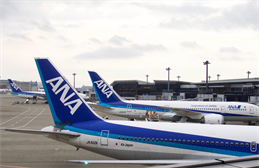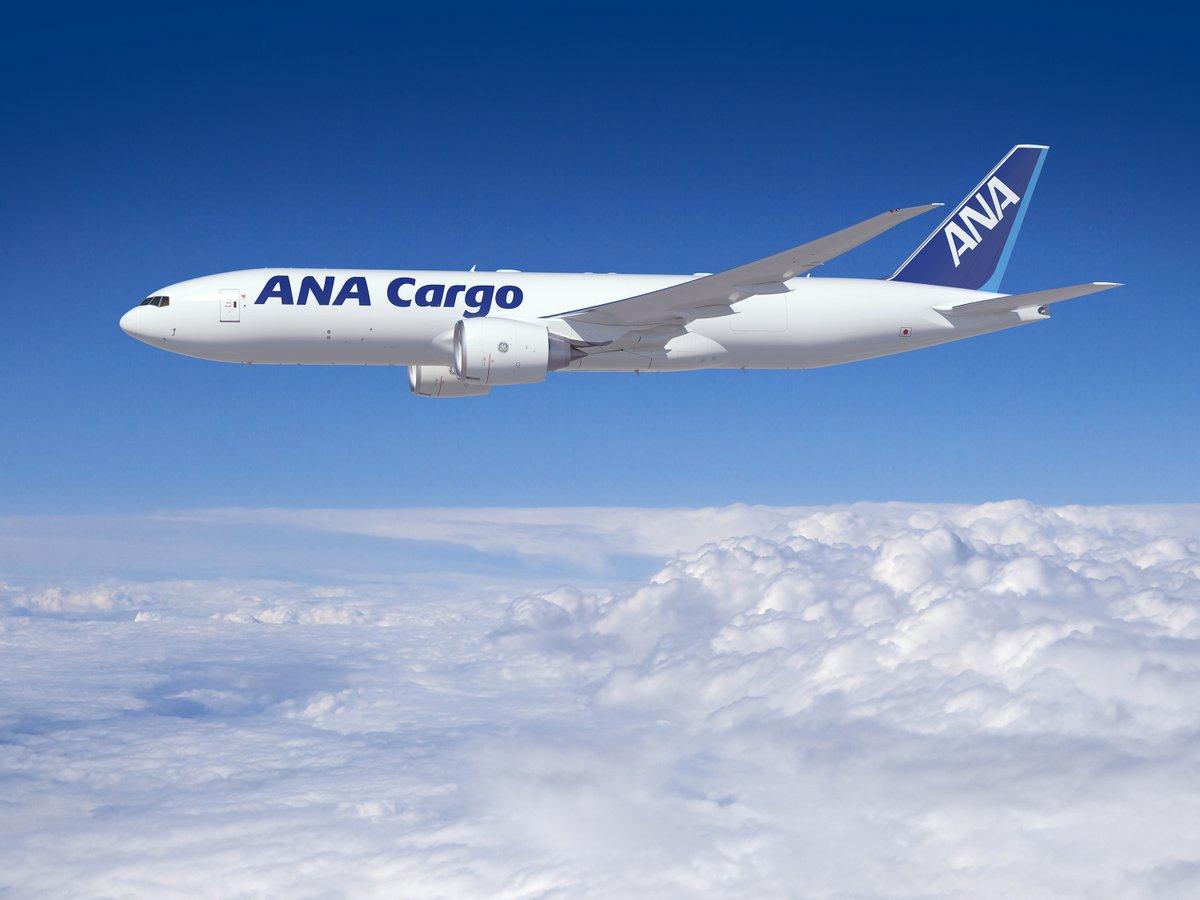
All Nippon Airways is hoping that a combination of increased capacity, strong trans-Pacific traffic and service quality will help propel it to become one of the top five cargo carriers globally by 2022, an aim set out by the company’s new mid-term corporate strategy.
“I’m quite optimistic that we will be able to do that,” said Toshiaki Toyama, senior vice president of cargo marketing and services at ANA and president of ANA Cargo, in an interview with Asia Cargo News during the International Air Transport Association’s World Cargo Symposium in Dallas.
In 2019, ANA Cargo is due to receive its two recently ordered Boeing 777 Freighters, becoming the first Japanese operator of the type. Additional belly space will also come in the form of new passenger 777 and 787 deliveries.
“This means that, by 2020, we will have almost 1.5 times the cargo capacity that we currently do,” said Toyama. “So we need to prepare many different things, such as an expanded warehouse at Haneda, remanagement of our operations processes, and, if we’re going to offer maindeck capacity, we’ll need commodities like ordinary or semiconductor machinery, tools and robots. In order to transport these oversize shipments, our handling procedures need to be well prepared, especially at Haneda and Narita.”
The carrier is already in discussions with the Haneda authorities on expanding its current warehouse at the airport within the next two years, and is also negotiating with the Narita Airport Authority about using some of the space at the International Air Cargo Terminal.
Toyama was quick to point out that the two 777Fs won’t be enough, but for now the company is taking things one step at a time and will wait until after inducting the first two.

Another factor contributing to an increase in cargo is the ability to expand frequencies and destinations when the government boosts slots at Haneda by approximately 40,000 from late 2018 to 2020, in time for the Summer Olympics. Toyama said that ANA intends to hold about 30% of the total and that, even though the new slots will mostly be used for passenger flights to fill gaps in Asia, Europe and the US, the extra belly capacity will still be significant.
In an attempt to further enhance their collaboration, ANA and Nippon Cargo Airlines established a strategic partnership in March 2018, involving codeshare and block space agreements, as well as maintenance support.
“Even right now, we have a close relationship with NCA and we purchase a lot of space from them, especially on the trans-Pacific lane,” Toyama said. “But under the new contract, they can also purchase our space, especially our intra-Asia network operated by our 767Fs. From April, we’re planning to increase our charter flights from Narita to Chicago to three a week with NCA and an American carrier.”
Similar to other major carriers, ANA Cargo is focusing on strengthening its specialized verticals. The airline obtained IATA’s Center of Excellence for Independent Validators in Pharmaceutical Logistics certification in November 2017 and will further promote that in the year ahead.
“IACT at Narita recently opened a temperature-controlled facility for pharma,” said Toyama. “We have a close relationship with them since we’re the biggest shareholder. I think we will need something similar at Haneda and Okinawa too. I believe that this, together with our new CEIV certification and our route network, will enable us to provide a very good service to our customers. That’s why we’ve been receiving so many enquiries.”
As for international e-commerce, ANA Cargo is approaching all the postal offices, the forwarding companies providing B2B2C services, and the express companies and integrators. Apart from that, ANA Holdings and a Japanese IT company called ACD Inc. have set up ANA Cargo Direct, a joint venture under which ANA Cargo offers a door-to-door delivery service for Japanese products bought by online shoppers.
“Since January 2018, they have been operating a cross-border e-commerce website which for now is only targeting business from Japan to China,” Toyama said. “Last month wasn’t too bad but the volumes are still relatively low at the moment. They’re planning some promotions with Tencent starting from June, so we are expecting some good results from that.”
In line with the rest of the industry, ANA Cargo had an excellent 2017, with Toyama saying that it was probably the best result the company had produced in the past 20 to 30 years.
“All geographical segments were good and all sectors in terms of commodities were strong, particularly automotive parts, semiconductors and electronics,” he said. “We were able to increase our prices, which contributed to increased revenue and gave us better yields.”
One standout performer has been the airline’s new flight between Narita and Mexico, launched in February 2017 and operated daily with a 787-8.
“Performance has been very, very good,” Toyama said. “It has actually exceeded my expectations. Unfortunately we have payload limitations on the westbound leg and can hardly carry any cargo, so we look forward to when the runway construction there is completed.”
On the other hand, the domestic market has been stagnant, which Toyama attributed to the gradual shrinking of Japan’s population.
“That also means that air cargo, surface transport and sea freight are all slowly decreasing as well,” he said. “Market demand was almost the same as in 2016. I’m not sure whether we should say it is good or not, but I can still see stable demand in the domestic market. E-commerce is driving domestic demand, but that’s mainly transported by trucks.”
Overall though, Toyama is expecting cargo demand to be strong in 2018 and not too different from 2017, but he is confident that ANA will begin making its way up the IATA tonnage rankings over the next four years to eventually secure a spot among the top five, currently consisting of FedEx, UPS, Emirates, Qatar Airways and Cathay Pacific.
“At the moment, we’re ranked 10th but there isn’t too large a gap between the fifth and us,” said Toyama. “With our enlarged capacity in 2020, I think we have a good chance of achieving that target.”
By Jeffrey Lee
Asia Cargo News | Dallas



